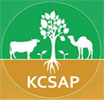Biofloc Technology
 Biofloc technology (BFT) is the new “blue revolutionary bio-pathway” in aquaculture that works on the basis of mass production of in situ microorganism. The microorganisms are credited for (i) maintaining water quality; (ii) increasing culture feasibility by reducing feed conversion ratio (FCR) and feed costs; and (iii) competing pathogenic agents. One visible strength of BFT is that the initial investment cost is less than most conventional live feed production systems, because only sunlight, a carbon source and sometimes aeration are needed. Technically, BFT rely on photosynthetic process where uneaten feeds, faeces and excess nutrients are converted into edible bioflocs, also called singe cell proteins (SCP). The SCP are loosely bound by bacterial mucous to form visible floating clumps, which are valuable food materials for cultured fish or shrimps. Efficient BFT systems reduces cost of fish feed by 30% as each pellet is eaten twice (i.e., as fresh pellet, and, as SCP), thus leading to high aquaculture productivity and profitability. The bioflocs contain essential nutrition and also have probiotic effect that ensures biosecurity in the BFT systems.
Biofloc technology (BFT) is the new “blue revolutionary bio-pathway” in aquaculture that works on the basis of mass production of in situ microorganism. The microorganisms are credited for (i) maintaining water quality; (ii) increasing culture feasibility by reducing feed conversion ratio (FCR) and feed costs; and (iii) competing pathogenic agents. One visible strength of BFT is that the initial investment cost is less than most conventional live feed production systems, because only sunlight, a carbon source and sometimes aeration are needed. Technically, BFT rely on photosynthetic process where uneaten feeds, faeces and excess nutrients are converted into edible bioflocs, also called singe cell proteins (SCP). The SCP are loosely bound by bacterial mucous to form visible floating clumps, which are valuable food materials for cultured fish or shrimps. Efficient BFT systems reduces cost of fish feed by 30% as each pellet is eaten twice (i.e., as fresh pellet, and, as SCP), thus leading to high aquaculture productivity and profitability. The bioflocs contain essential nutrition and also have probiotic effect that ensures biosecurity in the BFT systems.
Why Biofloc Technology?
- Biofloc systems reduce the spread and effectiveness of pathogens while simultaneously improving fish health through better water quality and bolstered feed availability.
- As such, biofloc systems can give us a natural way of producing more seafood sustainably, while concurrently improving farm profitability.
Inception Meetings







